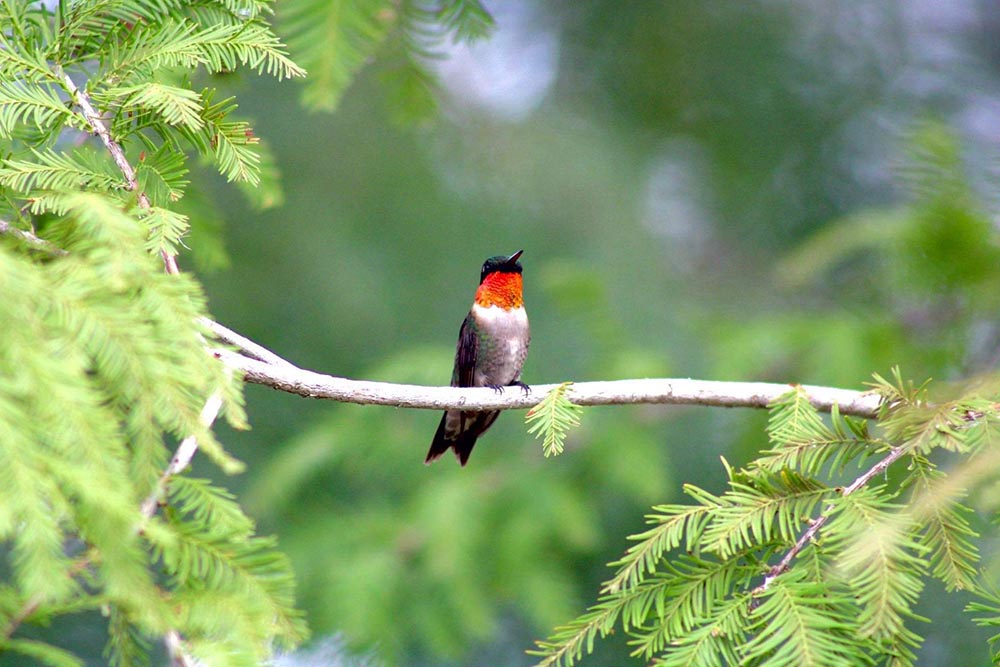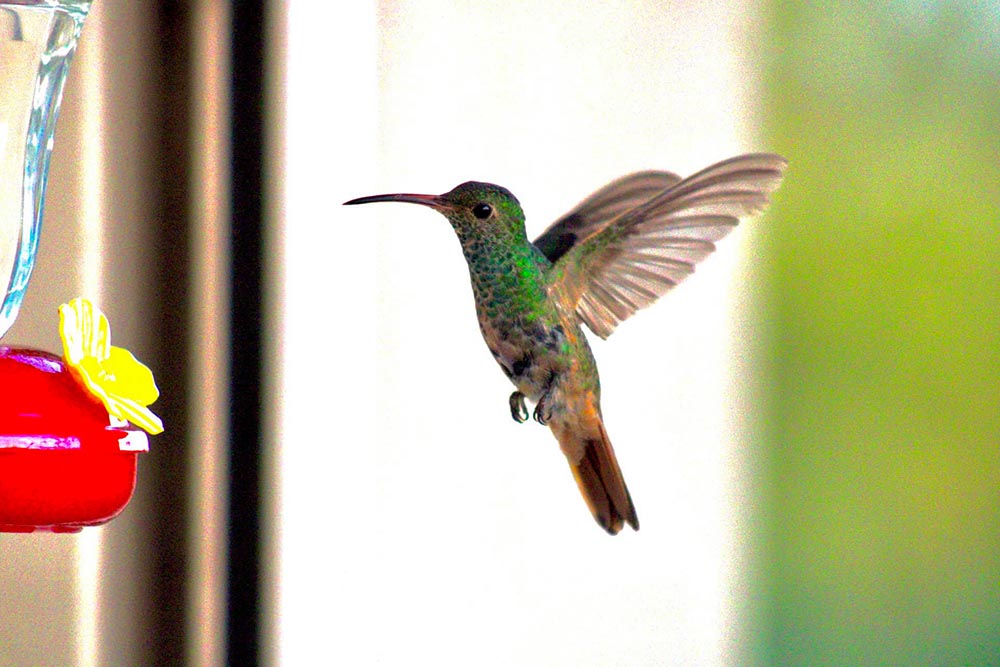By Ashley Gregory, Texas A&M AgriLife Extension Service
The days are still long and hot, but the first signs of fall are in the air. You may have already seen them darting around your garden. It’s fall hummingbird migration! Here in the RGV we are lucky to have a resident species (Buff-bellied Hummingbird) that lives here year-round, but during the fall migration we get to see a few others as they pass through.
I spoke with John Brush, Urban Ecologist at Quinta Mazatlan to get a little more information on our migratory hummingbirds. In addition to our Buff-bellied, there are 4 other hummingbird species that can be seen here throughout the year.
The Ruby-throated Hummingbird shows up in the largest numbers as it migrates through our area in both the spring and fall. Peak fall migration is between September and October as they make their way down to Mexico and Central America. While they do not breed here like the Buff-bellied, small populations can be seen overwintering here.
The Rufous Hummingbird can mostly be seen when they arrive during the fall migration. While they stay on through the winter and head out in early spring, they do not breed here. There is also Allen’s Hummingbird that migrates through and looks very similar to the Rufous species. The two can be difficult to tell apart for the untrained eye.
And finally, we have the Black-chinned Hummingbird that also migrates through, but not at the scale of the Ruby-throated species. These can be seen throughout the year since they do breed here, however they are most frequently seen from around March to July.
If you are trying to attract these beautiful little birds, be sure to add in some Turk’s Cap (Malvaviscus arboreus), Scarlet Sage (Savlia coccinea) and Coral Bean (Erythrina herbacea) to your garden.

During migration the addition of a feeder can be useful as the populations increase and the birds are in search of quick and easy energy sources. If you plan on putting out a hummingbird feeder keep these tips in mind:
• There is no need to add red dye
• Use a ratio of 1 part sugar to 4 parts water
• Clean the feeder weekly with ONLY hot water
If you have the space and want to make a garden just for hummingbirds select an area with both sun and shade. Plan for a narrow or curved design to give the hummingbirds easy access to all the flowers. Variety is important, choose flowers with different colors, and different bloom times. Keep in mind they prefer a tubular shaped flower and group them by color (3 or more) so the birds can easily find them. They are more attracted to color than scent.
Incorporating trees not only provides shade for roosting and nesting, but it can offer food and nesting materials. If you didn’t know, hummingbirds also eat small bugs like fruit flies. Like all birds they are attracted to water so consider adding a bird bath or mister.
For more options on plants for your hummingbird garden visit Quinta Mazatlan’s website:http://www.quintamazatlan.com/default.aspx
Ashley Gregory is the Horticulturalist for Hidalgo County with Texas A&M AgriLife Extension Service. She can be reached at the Hidalgo County Extension Office at (956) 383-1026 or by email at [email protected].
RELATED READING
Uncommon visitor: Rare hummingbird sightings draw birders from across U.S.
Hundreds of birds expected to visit SPI during spring migration




